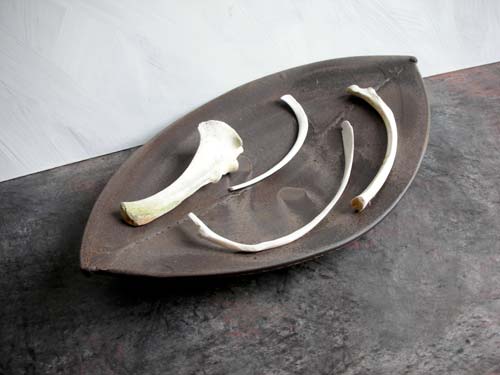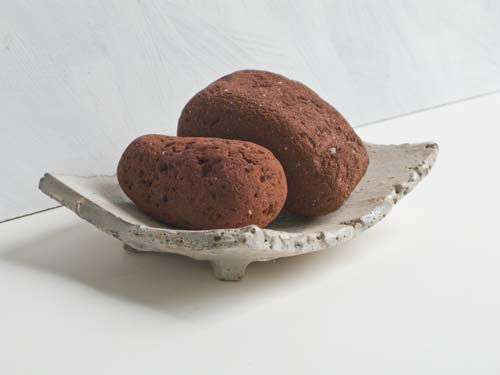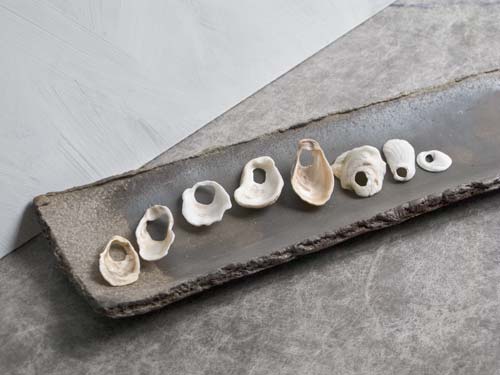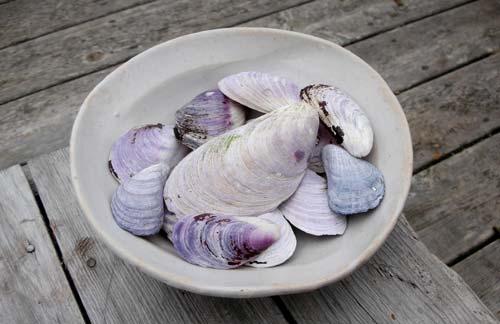 Not only have I been collecting images, but everywhere I go I collect shells, bricks and what ever speaks of the place. A few years ago I remember finding a seal skull on the rocky shore of Heron Island, Maine. It was bleached, white and beautiful in its mystery and simplicity. When I came up the path from the shore I met a friend who had just found an antique bottle near his porch. He showed me its peculiarities and obvious age with great glee. So I reached in my backpack to show him my treasure and his face fell. A skull? He was appalled and stared blankly at me. I asked him to think of of Georgia O'Keefe for artistic connotations. I have found duck skeletons and seagull heads and I am always struck by the structural nuances, the poetic possibilities and the artistic celebration of elemental forms in bones.
Not only have I been collecting images, but everywhere I go I collect shells, bricks and what ever speaks of the place. A few years ago I remember finding a seal skull on the rocky shore of Heron Island, Maine. It was bleached, white and beautiful in its mystery and simplicity. When I came up the path from the shore I met a friend who had just found an antique bottle near his porch. He showed me its peculiarities and obvious age with great glee. So I reached in my backpack to show him my treasure and his face fell. A skull? He was appalled and stared blankly at me. I asked him to think of of Georgia O'Keefe for artistic connotations. I have found duck skeletons and seagull heads and I am always struck by the structural nuances, the poetic possibilities and the artistic celebration of elemental forms in bones.
When I collect a series of similar objects, I find myself thinking of the artist Candy Jernigan. She was a collector of evidence and ephemera. She made collages, journals and paintings out of urban refuse including cheese doodles, cans of beans, plant leaves, crack vials and a dead rat. Chuck Close said, "She took the old saying 'art history is to art what ornithology is to birds' and stood it on its head." I get the feeling that walking down a street with her would have changed my vision so that I could see beauty in the most mundane cigar butt. The collections of her objects became icons--evidence that she had been to a place, seen the details and retained a proof of the moment. A viewer could make a new picture from the remnants of her collections.

